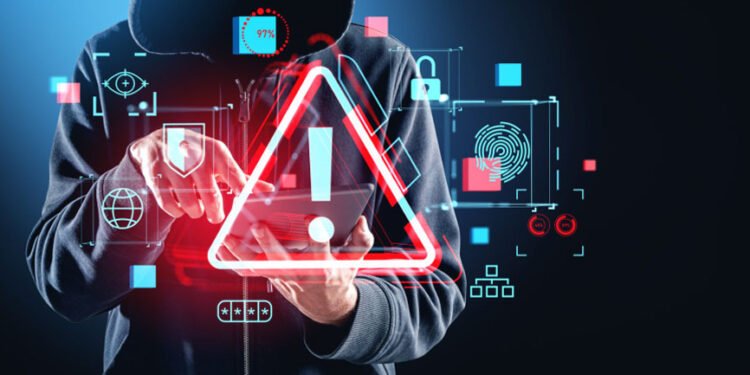Introduction to Cybersecurity
Cybersecurity involves collecting practices, frameworks, and technologies to protect networks, devices, data, and programs from unauthorized access or malicious attacks. Because cyber dangers are becoming more frequent, cybersecurity has become an essential part of using technology in personal and professional contexts. Exploring cybersecurity begins with understanding its complexities and acknowledging the need for such measures in an increasingly digital world. More emphasis has to be placed on safeguarding digital assets in the modern digital world. Knowing cybersecurity precautions aids in maintaining privacy and protecting sensitive data as technology becomes increasingly ingrained in our everyday lives. The FortiEDR Discover and Protect overview offers critical insights into implementing cybersecurity strategies effectively. This post provides helpful advice for people and companies, enabling them to successfully negotiate the intricate world of cybersecurity without feeling overburdened.
The Importance of Cybersecurity Today
Cybersecurity is an indispensable aspect of our interconnected modern world. The proliferation of connected devices and advanced technologies has revolutionized daily life and business operations but has also heightened vulnerabilities to cyber threats. As technology advances, cybercriminals continually adapt, devising more sophisticated methods to exploit weaknesses. A recent industry report underscores the growing importance of robust cybersecurity measures to counteract these threats. To safeguard sensitive data and ensure privacy, businesses must adopt proactive strategies, including regular system updates, employee training, and advanced threat detection tools. Organizations can securely protect their assets, maintain trust, and navigate the digital age by prioritizing comprehensive cybersecurity frameworks.
Common Threats in the Digital World
The digital world presents a landscape rich with opportunities—and threats. Among the most prevalent are malware, phishing, and ransomware, which can severely compromise sensitive data and disrupt business operations. Malware, for instance, encompasses various types of harmful software designed to damage or exploit systems, while phishing attacks manipulate individuals into revealing confidential information. Ransomware, on the other hand, encrypts data and demands payment for its release. Understanding these threats is critical to developing effective defensive strategies.
Building a Robust Security Strategy
Creating a robust security strategy starts with identifying and addressing potential system vulnerabilities. Regular vulnerability assessments are essential to uncover weak points and implement necessary fixes before they are exploited. These assessments provide a clear picture of the system’s security posture and guide the prioritization of improvements. An effective strategy includes a detailed incident response plan outlining steps to minimize damage and recover swiftly during a breach. Proactivity is critical—organizations must foster a culture of security awareness and readiness through continuous monitoring, employee training, and adherence to best practices, ensuring a resilient and adaptive defense against evolving threats.
Integrating Technology and Policy
Developing a comprehensive security strategy requires blending cutting-edge technological tools with well-defined security policies to create a robust, multi-layered defense against cyber threats. Implementing technologies like firewalls, advanced encryption protocols, intrusion detection systems, and multifactor authentication enhances your organization’s ability to deter and detect potential breaches. Equally important are clear, enforceable security policies that outline user responsibilities and acceptable practices, fostering a culture of accountability. Regular employee training sessions are essential, ensuring staff are equipped to identify risks such as phishing or malware. Organizations can establish a resilient security framework by combining advanced technology, firm policies, and proactive education.
Cybersecurity for Small and Medium Enterprises (SMEs)
Small and Medium Enterprises (SMEs) encounter distinctive cybersecurity challenges, primarily stemming from resource constraints. However, strong security is crucial for companies of all sizes and not only for big firms. Cyberattacks can target SMEs due to perceived vulnerabilities, making adequate protection critical. Fortunately, cost-effective solutions tailored to SMEs enable these businesses to safeguard their operations without exceeding budget limits. Strategies such as leveraging managed security services, implementing basic cybersecurity hygiene practices, and investing in scalable tools can provide a significant defense. By prioritizing cybersecurity within their means, SMEs can protect sensitive data, maintain customer trust, and ensure operational resilience.
Tips for Maintaining Strong Security Practices
Every individual and business can enhance cybersecurity through straightforward, actionable practices. Regular software and system updates are fundamental, as they often patch known vulnerabilities that attackers could exploit. Establishing secure password practices, including using two-factor authentication, adds a layer of security. Frequent data backups ensure that data loss is minimized during an attack. Finally, given that human error is a typical way for cyber threats to enter a system, personnel must receive training on recognizing and reacting to phishing efforts.
Real-life Examples of Cyber Threats
Recent real-world examples of cyber threats underscore the necessity of robust cybersecurity measures. One noteworthy instance involves a large company rendered inoperable by a highly skilled ransomware assault. This breach cost millions in ransom demands and damaged the company’s reputation. Learning from such examples provides invaluable insights into threat management and highlights the importance of having well-defined response strategies.
Future Trends in Cybersecurity
The future of cybersecurity promises advancements that will significantly shape defense mechanisms. Threat detection and response are about to radically change thanks to emerging technologies like artificial intelligence and machine learning. These innovations offer the potential to identify threats faster and more accurately, reducing the risk of successful attacks. As the cybersecurity landscape evolves, staying informed about these trends will be essential for digital asset protection.
In conclusion, while navigating the field of cybersecurity can seem daunting, taking informed and proactive steps can significantly reduce risk. By staying abreast of developments in cybersecurity and employing effective strategies, individuals and businesses can safeguard their digital assets seamlessly and efficiently.












